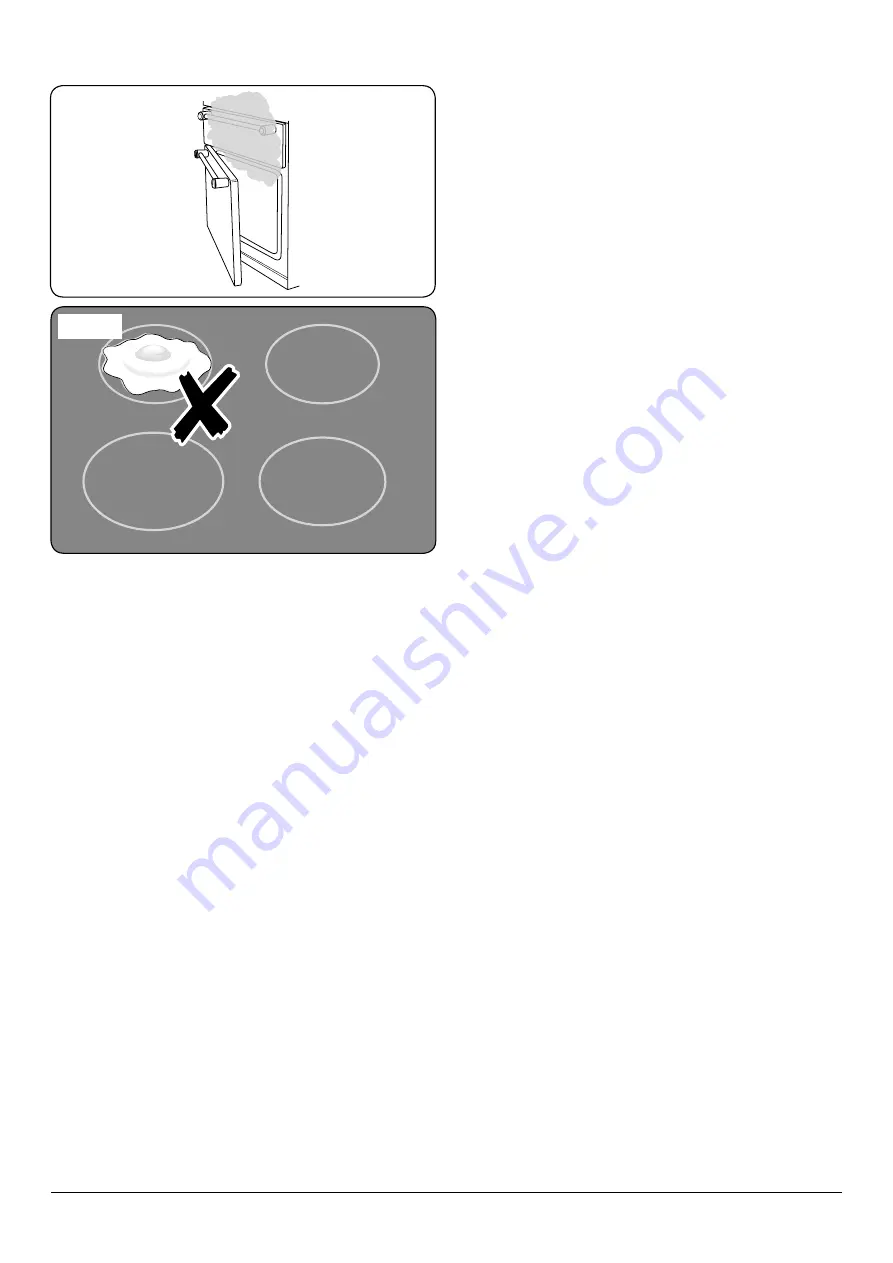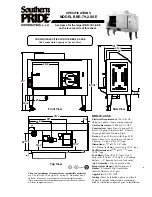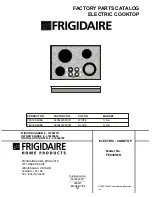
2
ArtNo.324-0001 Steam burst
ArtNo.312-0001 Not cooking surface
n
n
Make sure to use adequately sized pans with flat
bottoms that are large enough to cover the surface
of the hotplate heating area. Using undersized
pans will expose a portion of the hotplate surface
to direct contact and may result in the ignition of
clothing.
Never leave the hotplate unattended at high heat settings.
Pans boiling over can cause smoking, and greasy spills may
catch on fire. Use a deep fat thermometer whenever possible
to prevent fat overheating beyond the smoking point.
n
n
NEVER leave a chip pan unattended. Always heat fat
slowly, and watch as it heats. Deep fry pans should
be only one third full of fat. Filling the pan too full
of fat can cause spill over when food is added. If you
use a combination of oils or fats in frying, stir them
together before heating, or as the fats melt.
Foods for frying should be as dry as possible. Frost on frozen
foods or moisture on fresh foods can cause hot fat to bubble
up and over the sides of the pan. Carefully watch for spills or
overheating of foods when frying at high or medium high
temperatures. Never try to move a pan of hot fat, especially a
deep fat fryer. Wait until the fat is cool.
Do not use the top of the flue (the slot along the back of
the cooker) for warming plates, dishes, drying tea towels or
softening butter.
n
n
DO NOT use water on grease fires and never pick
up a flaming pan. Turn off the controls and then
smother a flaming pan on a surface unit by covering
the pan completely with a well fitting lid or baking
tray. If available, use a multipurpose dry chemical or
foam-type fire extinguisher.
Cooking high moisture content foods can create a ‘steam
burst’ when the oven door is opened. When opening the
oven stand well back and allow any steam to disperse
Take care that no water seeps into the appliance.
n
n
Do not attempt to lift or move the appliance by
pulling the door handles.
n
n
NEVER allow anyone to climb or stand on the hob.
n
n
The appliance is not intended to be operated by
means of external timer or separated remote control
system.
Hob Care
n
n
NEVER cook directly on the hob surface (Fig. 1.2).
n
n
DO NOT use the hob surface as a cutting board.
Do not leave utensils, foodstuffs or combustible items on
the hob when it is not is use (e.g. tea towels, frying pans
containing oil).
n
n
DO NOT place plastic or aluminium foil, or plastic
containers, on the hob.
n
n
DO NOT leave the hob zones switched on unless
being used for cooking.
Fig. 1.1
Fig. 1.2





































